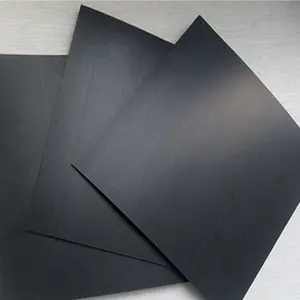Kenya’s arid and semi-arid lands (ASALs) face persistent water scarcity challenges, threatening agricultural productivity, livestock survival, and human livelihoods. However, the adoption of dam liners has emerged as a sustainable solution to mitigate water loss, conserve resources, and promote environmental resilience in these regions. This article explores the environmental benefits of dam liners in Kenya’s arid areas while providing insights supported by data, tables, and external links.
What Are Dam Liners?
Dam liners are synthetic geomembranes used to line reservoirs, dams, and ponds to prevent water seepage. Common materials for dam liners include HDPE (High-Density Polyethylene), LDPE (Low-Density Polyethylene), and PVC (Polyvinyl Chloride).** These liners are vital for water conservation, especially in areas with permeable soils prone to seepage losses.
Environmental Benefits of Dam Liners in Kenya’s Arid Regions
1. Reduction in Water Loss
In arid regions, water is precious. A significant challenge is the loss of water through seepage in unlined reservoirs. Dam liners create an impermeable barrier that:
- Minimizes seepage by up to 90%.
- Retains water for longer periods, ensuring availability during dry spells.
Example:
In a study by Water Resource Institute, water loss in earthen dams was reduced from 50% to less than 10% with the use of HDPE liners.
2. Improved Agricultural Productivity
By conserving water, dam liners ensure a stable water supply for irrigation. This stability promotes:
- Growth of drought-resistant crops.
- Improved yields, contributing to food security.
- Reduced dependency on rain-fed agriculture.
| Crop | Yield Without Liners (kg/ha) | Yield With Liners (kg/ha) | % Increase |
|---|---|---|---|
| Maize | 2,500 | 3,800 | 52% |
| Tomatoes | 6,000 | 9,200 | 53% |
| Beans | 800 | 1,300 | 62.5% |
3. Prevention of Soil Erosion
Unlined dams often lead to water seepage that destabilizes surrounding soils, causing erosion. By lining dams:
- Soil erosion is minimized, protecting arable land.
- Sedimentation in water bodies is reduced, maintaining reservoir capacity.
4. Enhanced Water Quality
Dam liners prevent contaminants from leaching into water reservoirs. This ensures:
- Clean water for domestic use.
- Safer water for livestock and wildlife.
Environmental Impact:
Studies show that unlined dams in arid regions are prone to pollution due to interaction with saline soils. Liners reduce such risks, improving the overall ecosystem.
5. Support for Wildlife and Biodiversity
Arid regions are home to unique flora and fauna that depend on scarce water resources. Dam liners:
- Ensure reliable water availability for wildlife.
- Support reforestation and regeneration of natural habitats.
Statistics Highlighting the Impact of Dam Liners in Kenya
- Water Conservation: A properly installed HDPE liner in a 10,000 m³ dam can save approximately 3,500 m³ of water annually compared to an unlined dam.
- Cost Efficiency: While the initial cost of installing dam liners is higher, the reduction in water losses can save farmers up to 30% in water costs annually.
- Adoption Rates: In Kenya, the use of dam liners in ASALs has grown by 20% annually, according to the Kenya Agricultural Research Institute (KARI).
External Links to Learn More
- Kenya Water Towers Agency – Information on water conservation in Kenya.
- World Bank’s Report on Water Management in ASALs.
- Agricultural Water Solutions – Resources on irrigation and dam liner adoption.
Are you looking to conserve water, enhance productivity, and protect the environment? Invest in high-quality dam liners today! Contact – Prime Variable Covers to learn more about durable and cost-effective solutions tailored to Kenya’s arid regions.
📞 Call Us: +254-724-157-314
📧 Email: info@primevariablecovers.co.ke
🌍 Visit Our Website: primevariablecovers.co.ke
Choose sustainability—choose dam liners!
Originally posted 2024-12-07 15:47:36.

